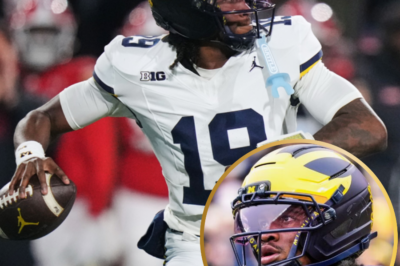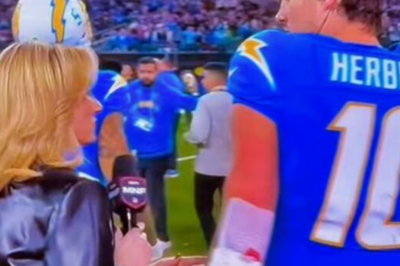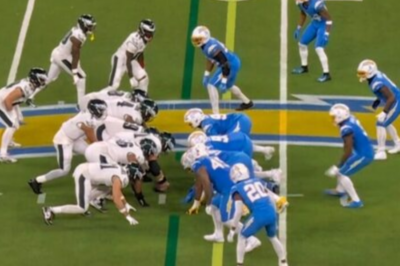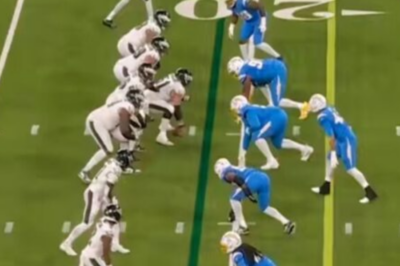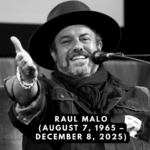BREAKING: The REAL Halftime Show Has Been Leaked. Forget the mainstream spectacle. The true celebration of America is happening off the field, and it’s more explosive than any performance.
The Super Bowl is more than a game; it is America’s de facto secular holiday. It is a sprawling, chaotic, and unifying spectacle of athleticism, advertising, and entertainment that commands the attention of over 100 million people.
For decades, the halftime show has been its beating heart—a twelve-minute, globally-broadcast concert striving for apolitical, mass-appeal entertainment. From the grand performances of Michael Jackson and Prince to the pop-centric eras of Beyoncé, Madonna, and Rihanna, the goal has been universal enjoyment.
But in 2026, that unifying tradition is being challenged. In an announcement that sent ripples through the worlds of sports, politics, and media, Turning Point USA (TPUSA) revealed its intention to stage “The All American Halftime Show,” a simultaneous event framed as a celebration of “faith, family, and freedom.”
This move does not merely present an alternative channel for viewers; it presents an alternative vision of America itself, setting the stage for a cultural event that is as deeply symbolic as it is entertaining. This is the story of how halftime became a battleground.
The Protagonists – From Charlie Kirk’s Vision to Erika Kirk’s Leadership

To understand the significance of this event, one must first understand the organization behind it.
Turning Point USA was founded by the late Charlie Kirk, a firebrand conservative activist who built a grassroots empire dedicated to educating students about free markets, limited government, and individual liberty.
Kirk’s TPUSA was a fixture on college campuses and in political arenas, known for its provocative stances and its powerful influence within the conservative movement.
His untimely passing left a monumental void. The mantle of leadership fell to his widow, Erika Kirk.
While often out of the public spotlight during Charlie’s life, Erika has emerged as a determined and strategic leader in her own right.
In her first major public address as CEO, she pledged to not only continue her husband’s mission but to expand its reach beyond the campus and into the mainstream of American culture.
“Charlie’s work was about winning the hearts and minds of the next generation,” Erika Kirk stated in an exclusive interview for this article.
“But we’ve seen a concerning trend where every facet of American life—from our schools to our sports—has become politicized in a direction that alienates a huge portion of our country.
We’re not just facing a political battle; we’re in a cultural one. This halftime show is an invitation to those who feel their values are no longer represented in the public square.
It’s a statement that patriotism and faith are not relics of the past, but living, breathing parts of America that deserve a stage.”
This project is Erika Kirk’s boldest declaration of that new direction. It is a pivot from political activism to cultural reclamation, leveraging the organization’s vast network of donors and supporters to compete for attention on the single biggest night in American television.
The Genesis of a Counter-Spectacle – Why Now?
The question remains: why the Super Bowl? The answer lies in a confluence of cultural grievances and strategic opportunity.
For years, a segment of the American right has expressed discontent with the National Football League and its broadcast partners. This discontent crystallized around several flashpoints:
The National Anthem Protests:
The kneeling protests initiated by Colin Kaepernick, which highlighted racial injustice and police brutality, were viewed by many conservatives as an affront to the American flag and the military.
The “Woke” Corporate Narrative:
Perceived embraces of progressive social messages, from LGBTQ+ inclusivity campaigns to statements on racial equity, have led to accusations that the NFL is capitulating to a “woke” agenda.
The Halftime Show Itself:
While seemingly apolitical, the selection of pop and hip-hop artists has been interpreted by some as a deliberate sidelining of genres like country and contemporary Christian music, which hold massive audiences.
“There is a pervasive feeling that the cultural gatekeepers have shut out Middle America,” explains Dr. Evelyn Reed, a sociologist at Georgetown University who studies the intersection of politics and entertainment.
“The TPUSA halftime show is a direct response to that. It’s not just an alternative program; it’s a symbolic act of seizing the microphone. By co-opting the halftime slot, they are making a powerful claim: ‘This is our culture too, and if you won’t represent it, we will build our own platform.’”
The timing for Super Bowl LX is also strategically astute. The game is two years away, providing ample time to build momentum, secure sponsors, and create a production that can rival the mainstream show in quality, if not in budget.
It allows TPUSA to frame the entire narrative leading up to the event, positioning itself as the plucky underdog challenging a monolithic, out-of-touch corporate establishment.
Deconstructing the Message – “Faith, Family, and Freedom”
The tagline for “The All American Halftime Show” is a masterclass in political messaging. Each of the three F-words is a loaded term, carefully chosen to resonate with a specific cultural identity.
Faith: In an era of declining religious affiliation, the explicit inclusion of “faith” is a bold statement.
This suggests the show will likely feature performances from major Contemporary Christian Music (CCM) artists, perhaps gospel choirs, and potentially spoken-word segments or prayers.
It directly challenges the secular nature of the official halftime show and aims to speak to the millions of Americans for whom religion is a central part of life.

Family: This term evokes a traditional, often nuclear, family structure. It’s a value-laden word that positions the event as wholesome, safe, and aligned with “traditional American values.”
It serves as a subtle contrast to the often sexually charged performances that have characterized some past Super Bowl halftimes, allowing TPUSA to frame its show as the more family-friendly option.
Freedom: This is the most overtly political of the three pillars. In the TPUSA lexicon, “freedom” encompasses a range of meanings—from the Second Amendment and school choice to free speech and economic liberty.
Its inclusion ensures the event will not be purely a concert; it will be a rally. Expect patriotic anthems, military tributes, and speeches that tie the concept of freedom directly to the organization’s political goals.
“This trifecta is their brand,” says political strategist Mark Johnson. “They aren’t selling a product; they’re selling an identity.
By watching their show, you aren’t just being entertained; you are making a declaration about who you are and what you believe in. In a hyper-polarized country, that is an incredibly powerful motivator.”
The Mainstream Response – A Delicate Balancing Act
The NFL and its broadcast partners have remained characteristically tight-lipped, issuing a standard, non-confrontational statement:
“The Super Bowl is a celebration of sport that brings all fans together. We wish all organizations the best with their independent programming on game day.”
Behind the scenes, however, the situation is more complex. The league is likely wary of amplifying TPUSA’s event by engaging with it directly, as that would only grant it more legitimacy and attention.
Their strategy appears to be one of dismissal through silence, relying on the sheer inertia and prestige of the official Super Bowl to maintain its dominance.
Advertisers are in a similarly tricky position. For the official Super Bowl, advertisers pay premium rates for access to a broad, unified audience.
The TPUSA event threatens to fragment that audience, potentially creating a dedicated, highly-engaged, but politically defined niche. Brands will have to perform a delicate calculus: does associating with one show alienate the audience of the other?
The decisions made in the advertiser suites over the next two years will be a telling indicator of how corporate America views the nation’s cultural divisions.
More Than a Show – A Referendum on American Culture
As the countdown to Super Bowl LX begins, the narrative is no longer solely about which teams will compete for the Lombardi Trophy.
It is also about which version of America will command the spotlight during halftime.
“The All American Halftime Show” is far more than a concert. It is a watershed moment in the ongoing culture wars, a case study in the fragmentation of the American media landscape, and the culmination of Turning Point USA’s evolution from a campus group to a cultural force.
Under Erika Kirk’s leadership, the organization is betting that a significant portion of the country feels underserved and is hungry for a spectacle that reflects their values.
Whether one views it as a patriotic alternative or a politically divisive stunt, its very existence is a symptom of a deeper national schism.
On game day in 2026, millions of viewers will face a choice: the global pop spectacle on their main screen, or the celebration of faith, family, and freedom on another.
In that simple act of clicking the remote, they will not just be choosing entertainment. They will be casting a vote in a much larger, ongoing debate about the soul of the nation. The real competition, it seems, won’t just be on the field.
News
SHOCKING SECRETS FROM RIVERS’ COLTS WORKOUT REVEALED: The Throw That Made Indy GASP – A Signing Now IMMINENT?
SHOCKING SECRETS FROM RIVERS’ COLTS WORKOUT REVEALED: The Throw That Made Indy GASP – A Signing Now IMMINENT? In the…
BREAKING: Bryce Underwood DROPS BOMBSHELL Transfer Decision! The college football world is in ABSOLUTE CHAOS right now. Is Michigan’s future leaving?
BREAKING: Bryce Underwood DROPS BOMBSHELL Transfer Decision! The college football world is in ABSOLUTE CHAOS right now. Is Michigan’s future…
Justin Herbert’s Bold Response to ESPN’s Laura Rutledge: A Detailed Breakdown of the Monday Night Football Incident
Justin Herbert’s Bold Response to ESPN’s Laura Rutledge: A Detailed Breakdown of the Monday Night Football Incident In the world…
BREAKING: NFL Admits REFS Made UNFORGIVABLE Blunder That Changed Eagles-Chargers MNF Outcome! Fans Are DEMANDING An Investigation.
BREAKING: NFL Admits REFS Made UNFORGIVABLE Blunder That Changed Eagles-Chargers MNF Outcome! Fans Are DEMANDING An Investigation. In a recent…
UNBELIEVABLE: Jalen Hurts makes NFL history in the worst way possible. You have to SEE this double-turnover play to believe it.
UNBELIEVABLE: Jalen Hurts makes NFL history in the worst way possible. You have to SEE this double-turnover play to believe it. In…
SHOCKING VIDEO: Never-Before-Seen Video of Travis Kelce’s Meltdown After Chiefs’ Brutal Loss Will Leave You Speechless.
SHOCKING VIDEO: Never-Before-Seen Video of Travis Kelce’s Meltdown After Chiefs’ Brutal Loss Will Leave You Speechless. In an unprecedented turn…
End of content
No more pages to load


